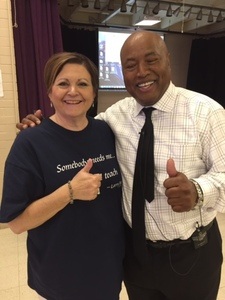
Staying Motivated When Test Scores in the School are Down
Staying Motivated When Test Scores in the School are Down
There’s so much emphasis on test scores that many teachers are constantly depressed and to be honest, many are getting out of the field. However, those of us who love our profession and our students don’t see that as an option.
So how can we keep our heads up when we know we’re teaching and doing the best we can? My first suggestion for you is to look for other indicators of success rather than just a child’s test score.
For instance, look at the effort your students give. If you’re getting your students to try their best, isn’t this a skill that will serve them well in life? Look at whether or not they enjoy learning and participating in class. Won’t this enthusiasm and engagement help them greatly in life? Wanting to learn for learning’s sake is something that helps students who may start out behind be able to catch up and eventually even surpass many others.
I believe there’s a place for testing but there’s little doubt that it has become the focus in too many places, even above learning. Therefore, I ask you to actually sit down along with some of your colleagues in the building and develop anywhere between 5-10 indicators of success besides test scores. For instance, consider how many books they read as being an important indicator of future success. Somewhere down the road, the experiences they encounter in those books can be life-changing and that doesn’t always show up in a test score.
An indicator of success that’s often overlooked in so-called low-performing schools is social awareness or social aptitude. For example, are your students interested in the well-being of others? Do they help collect food for the less fortunate or take part in other social campaigns? How many of them will someday give back to the community because of the types of things you taught them as a teacher or your school did as a community project? Don’t get down because the test scores aren’t as high as you would like. Work on test scores, definitely, but consider the whole child when determining her or his level of success.
You can stay motivated as an educator even when test scores aren’t optimal. Remember, there’s more than one indicator of success. By focusing on the big picture, you can stay motivated to continue to enhance the lives of your students!




 It’s often difficult to do your best work and stay motivated with so many things pulling at you every day. However, you can make it through challenging times and inspire your class to love learning!
It’s often difficult to do your best work and stay motivated with so many things pulling at you every day. However, you can make it through challenging times and inspire your class to love learning!
 Many teachers struggle with feeling as though their students just aren’t motivated. The advice “Don’t wait on a blessing, be one” is a perfect way to approach students who seem unmotivated.
Many teachers struggle with feeling as though their students just aren’t motivated. The advice “Don’t wait on a blessing, be one” is a perfect way to approach students who seem unmotivated.
 Have you ever read a joke and laughed out loud? Have you ever read a quote and truly thought about it’s meaning? Have you ever read a book that you could not put down? Words matter. Words are powerful. They can shape the future of a child.
Have you ever read a joke and laughed out loud? Have you ever read a quote and truly thought about it’s meaning? Have you ever read a book that you could not put down? Words matter. Words are powerful. They can shape the future of a child.  This is one of the reasons why I have had a concern about the term “at-risk” when we refer to students. I am well aware that many students are “at risk” for failing or dropping out. Yet, these students are so much more than “at risk.” They are indeed “at promise.” They have the ability to be successful and productive members of our communities. What they need is support. With the proper support we know they can go far!
This is one of the reasons why I have had a concern about the term “at-risk” when we refer to students. I am well aware that many students are “at risk” for failing or dropping out. Yet, these students are so much more than “at risk.” They are indeed “at promise.” They have the ability to be successful and productive members of our communities. What they need is support. With the proper support we know they can go far!  I returned this month to
I returned this month to 
 Another way to get students excited is to get them talking about themselves. Ask students to verbally explain, write a paragraph, or even create a song or rap about how they may be familiar with the topic you’re teaching. In science when I talked about waves and oceans, I often had my students write two or three paragraphs about an experience they had interacting with waves or with any body of water. Then I would show them how they were impacted by waves and by the way oceans, lakes, or streams operate. This was a great segue to the discussion of the day.
Another way to get students excited is to get them talking about themselves. Ask students to verbally explain, write a paragraph, or even create a song or rap about how they may be familiar with the topic you’re teaching. In science when I talked about waves and oceans, I often had my students write two or three paragraphs about an experience they had interacting with waves or with any body of water. Then I would show them how they were impacted by waves and by the way oceans, lakes, or streams operate. This was a great segue to the discussion of the day.